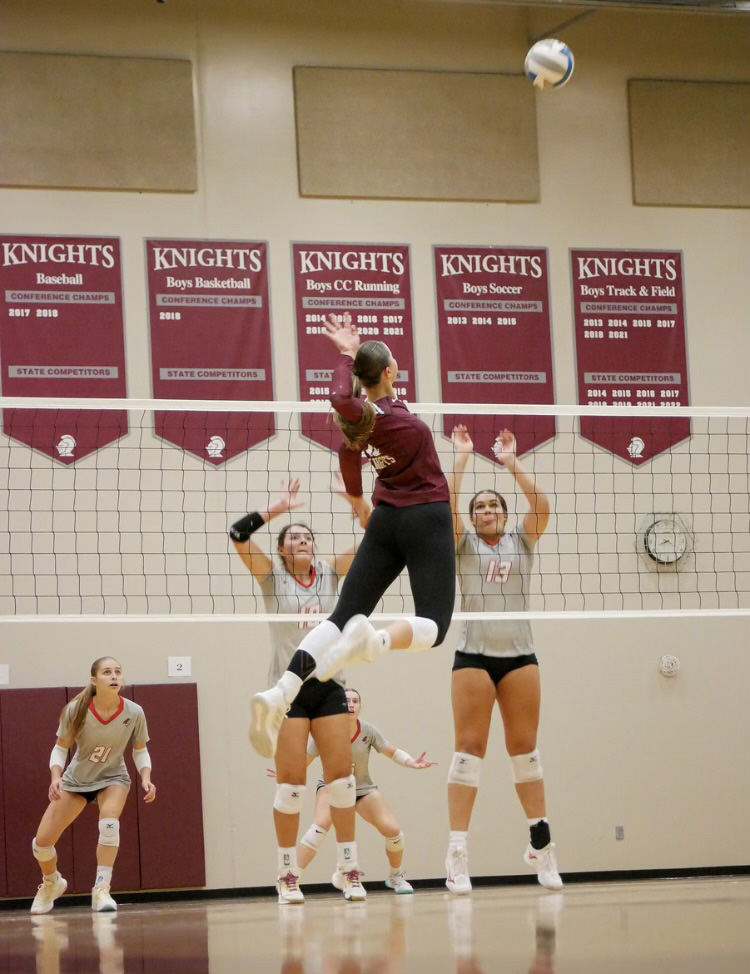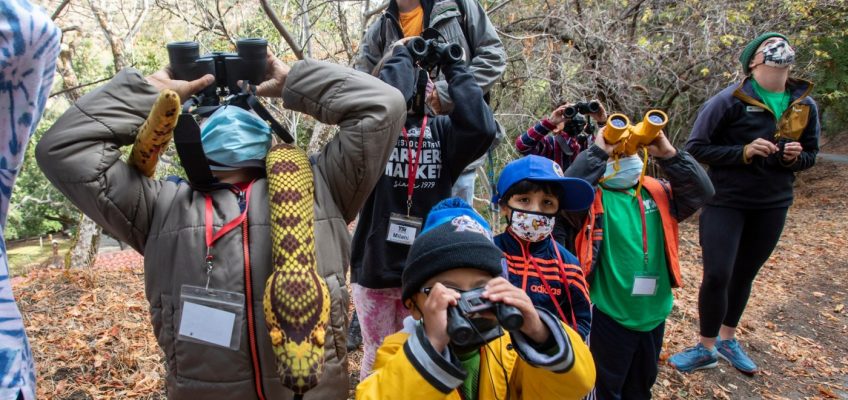Ava Ball has long been a talented player posting gaudy numbers for a strong program. But her junior year of volleyball at Nova Classical Academy marked significant growth for the outside hitter.
Because she was asked to do it all, all the time.
Graduating six seniors — including two all-state players and a libero who Knights coach Tom Dobbs believed also could have earned that distinction — from a year ago, much of the onus for this year’s squad fell on Ball’s shoulders.
“She’s the hub of the wheel. Everything revolves around her,” Dobbs said. “I think everyone knows that.”
Which can be a major burden for a player. But Ball answered the call every time. The end result was a wildly successful season by team and individual standards. Despite the massive roster turnover, Nova Classical Academy returned to the Class 2A, Section 4 final.
As for Ball? The South Dakota commit finished this season with a jaw-dropping and state-best 633 kills. That is why she is the 2023 East Metro volleyball player of the year.
“You grow so much in club (volleyball),” Ball said. “But in like the situation I was in this year, I think I grew a lot more than I have in past seasons, because I was so heavily relied on.”
If anyone is built to handle such responsibilities, it’s Ball. She grew up with three sisters who were heavily involved in the sport. Dobbs remembered seeing her walking around gyms when she was a little girl.
Ball noted how much she soaked in just watching her sisters — her biggest mentors — play. That information gathering laid a strong foundation for the high IQ player she has become.
That growth only continues.
“I think I’ve definitely grown a lot mentally. Through club, that was a lot of my focus,” Ball said. “So with that mental piece, my gameplay took off from there. Because when you have that mental piece down, the little things start to click.”
Dobbs recalled a two-game stretch this season in which Ball notched 73 kills. Twice this fall she threatened the state record for kills in a match, which Dobbs said is 48.
Ball is a high-level athlete. But anyone going up for that many attacks has to have a wide array of shots in her arsenal to keep a defense on its heels.
“We work a lot in practice on shot selection and choices, and knowing that an off-speed ball can score in the same ways that a thunderous attack to the 10-foot line can score,” Dobbs said. “And she’s smart that way. … You realize that you can’t just swing hard. You’ve got to be smart.”
Especially when you’re attacking from every spot on the court. Ball’s back-row attacks were an equally-large part of the Knights’ offense. She was a constant threat. Pair that with her ability to contribute defensively, and she truly is a well-rounded player.
“She checks all the boxes,” Dobbs said.
And she always is looking for more. Her intangibles are what Dobbs believes separates the junior from the pack.
“Her demeanor is very focused and driven. She has a very high ceiling. Her volleyball IQ is tremendous. She competes always, but she’s very calm, and she’s very, very humble. She’s demonstrative on the court, but it’s never directed at the other team. It’s always directed at her supporting cast, her teammates,” Dobbs said. “She’s a fierce competitor, and I feel like that’s maybe the biggest thing is that everything counts, everything matters, whether it’s getting to practice on time, helping the team mentally, leading by example physically on the court and off.”
That’s how you grow into the statistical juggernaut Ball has become. She’s right around 1,600 kills for her career. Ball laughed as she admitted she, too, is a little surprised sometimes by her production. Reaching 2,000 career kills is not only a possibility, but a likelihood next season.
“That would be such a special thing to accomplish,” Ball said. “So, hopefully I can get there.’”
Ball admitted she was nervous about the increased responsibilities heading into the season. But, by season’s end, she noted “this is a lot of fun.”
“Everyone stepped up to play their role,” she said.
And Ball was the rising tide that raised all boats.
“One of the things that makes her great, too, is her team. … It’s parents, it’s the school, it’s her club. We like to describe our team at Nova as everyone in the gym,” Dobbs said. “If you could see not only the support, but the respect. You look at some of the younger players, they look at her like kids look at professional athletes, really understanding that, ‘Wow, you’re in the presence of someone really spectacular here.’ And I think they really embrace that.”
Finalists
Mesaiya Bettis, junior outside hitter, Burnsville: Iowa State commit tallied 455 kills this fall for the Blaze.
Hadley Burger, senior outside hitter, East Ridge: Multi-faceted threat helped East Ridge remain in top five of state rankings for much of season.
Rayna Christianson, sophomore setter, Lakeville North: Athletic and good at seemingly everything, Christianson figures to have the Panthers in title contention for years to come.
Audrey Kocon, senior setter, Mounds View: Providence commit is a great setter who also sports a dangerous swing.
Paige Wagner, senior middle hitter, Lakeville South: Michigan Tech commit had 243 kills for the Cougars.
Related Articles
Wisconsin volleyball: St. Croix Falls tops Cuba City to move into Division 3 state final
Wisconsin state girls volleyball: River Falls’ run comes to an end with loss to DSHA




